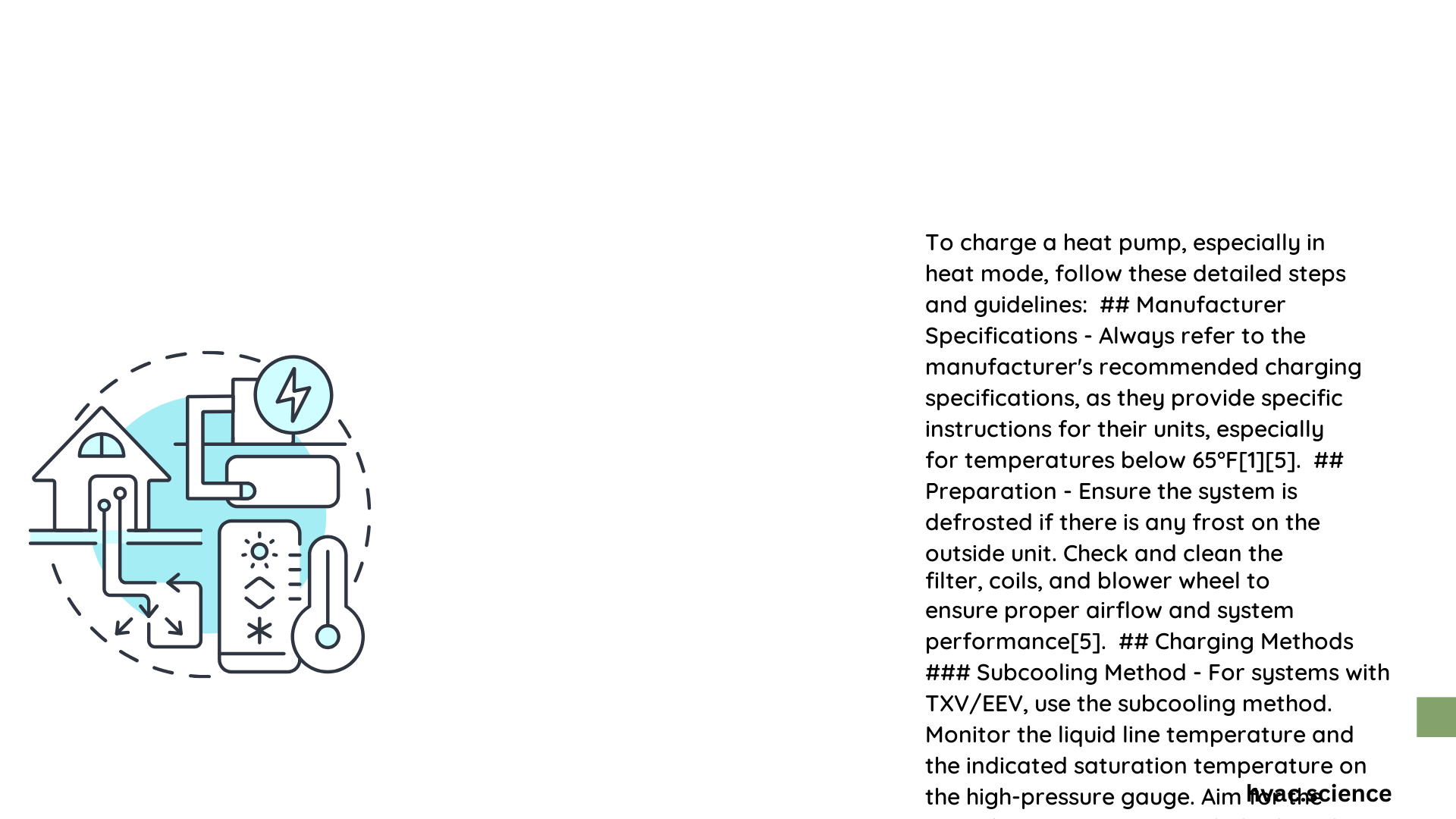Heat pump charging is a critical technical procedure requiring precision and specialized knowledge. Technicians must carefully manage refrigerant levels using advanced methods like superheat and subcooling techniques, ensuring optimal system performance through accurate temperature and pressure measurements. The process involves strategic use of manifold gauges, temperature probes, and understanding complex thermodynamic relationships between system components.
What Are the Primary Methods for Heat Pump Charging?
Superheat Charging Method
The superheat charging method is predominantly used for systems with fixed orifice or capillary tube metering devices. This technique involves precise temperature measurements and refrigerant adjustments.
Key Steps:
- Attach temperature probe 6 inches from compressor
- Insulate probe to prevent external temperature interference
- Determine target superheat using manufacturer charts
- Adjust refrigerant charge to achieve precise superheat temperature
Subcooling Charging Approach
Subcooling method is ideal for systems equipped with Thermostatic Expansion Valves (TXV) or Electronic Expansion Valves (EEV).
Critical Considerations:
- Monitor liquid line temperature
- Compare against high-pressure gauge saturation temperature
- Target manufacturer-recommended subcooling degrees
- Add or recover refrigerant for precise temperature management
What Tools Are Essential for Accurate Charging?

| Tool | Purpose | Accuracy Requirements |
|---|---|---|
| Manifold Gauges | Pressure Measurement | ±1 PSI |
| Digital Temperature Probes | Line Temperature Tracking | ±0.5°F |
| Refrigerant Scales | Precise Refrigerant Quantity | ±0.1 oz |
| Superheat Calculator | Calculation Verification | Digital Precision |
How to Diagnose Charging Complications?
Pressure Anomaly Detection
Low Suction Pressure Indicators:
- Potential undercharging
- Possible refrigerant leaks
- Metering device malfunction
- Restricted suction line
High Head Pressure Symptoms:
- Potential system overcharging
- Condenser coil blockage
- Excessive ambient temperature
- Airflow restriction
What Are Common Troubleshooting Techniques?
Leak Detection Protocol
- Utilize electronic leak detection tools
- Pressurize system with nitrogen
- Inspect connection points
- Check valve integrity
- Examine coil surfaces
Calibration Best Practices
- Regularly verify tool accuracy
- Compare against standard reference points
- Replace or recalibrate instruments annually
- Maintain detailed maintenance logs
What Safety Precautions Should Technicians Follow?
Personal Protective Equipment
- Wear chemical-resistant gloves
- Use safety glasses
- Employ respiratory protection
- Work in well-ventilated areas
Refrigerant Handling Guidelines
- Follow EPA regulations
- Use certified recovery equipment
- Prevent atmospheric contamination
- Dispose of refrigerant responsibly
Technical Recommendations
Performance Optimization Strategies
- Always consult manufacturer specifications
- Use digital diagnostic tools
- Maintain comprehensive service records
- Understand system-specific charging requirements
Continuous Learning Approach
- Attend professional development workshops
- Stay updated on technological advancements
- Learn emerging refrigerant technologies
- Understand evolving environmental regulations
Conclusion
Mastering the heat pump charging procedure requires technical expertise, precision instruments, and comprehensive understanding of thermodynamic principles. Continuous learning and adherence to manufacturer guidelines ensure optimal system performance and longevity.
